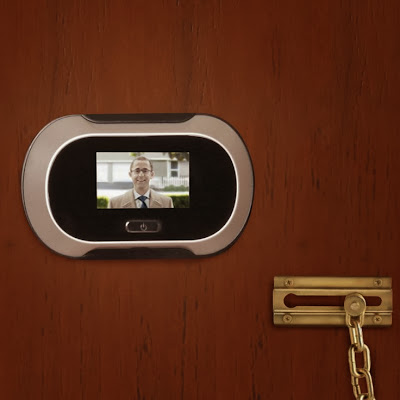1."Air Force One" isn't technically a plane: It's simply the radio call name for any U.S. Air Force plane carrying the president of the United States. As soon as the president steps aboard an Air Force plane, that plane is referred to as Air Force One by the crew and all air traffic controllers, in order to avoid confusion with any other planes in the area. If the president rides on an Army aircraft, that aircraft is Army One, and whenever he boards his specialized helicopter, that craft is Marine One. Civilians generally refer to the physical plane itself as Air Force One
2.Today, there are actually two customized Boeing 747-200B jets that regularly fly under this designation. They are nearly identical and are almost as tall as a six story building, and as long as a city block.
3.Air Force One is one of the most recognizable symbols of the presidency. Emblazoned with the words "United States of America," the American flag, and the Seal of the President of the United States, it is an undeniable presence wherever it flies
4.Air Force One has unlimited range and can carry the President wherever he needs to travel. The onboard electronics are hardened to protect against an electromagnetic pulse, and Air Force One is equipped with advanced secure communications equipment, allowing the aircraft to function as a mobile command center in the event of an attack on the United States. The media refer to it as “The flying Oval Office” or the “ The flying White House”. On September 11th, 2001, the president's plane showed that it was much more than an executive jet -- it became a mobile bunker when all ground positions seemed vulnerable to attack
5.Airforce One has four General Electric CF6-80C2B1 jet engines, which provide 56,700 pounds of thrust a piece. The top speed is between 630 and 700 miles (about 1,126km) per hour and the ceiling maximum (i.e how high the plane can fly) is 45,100 feet (commercial 747s fly at about 30,000 feet)
6.The plane carries 53,611 gallons (about 203,000 litres) of fuel and weighs 833,000 pounds (about 377,000 kg) fully loaded for a long-range mission. With a full tank, the plane can fly half way around the world. The plane has mid-ir refueling capability. As with the B-2 and other combat craft, in-flight refueling gives Air Force One the ability to stay up in the air indefinitely, which could be crucial in an emergency situation
7.Inside, the President and his travel companions enjoy 4,000 square feet of floor space on three levels, including an extensive suite for the President that features a large office, lavatory, and conference room. The president has onboard living quarters, with his own bedroom, bathroom, workout room/gym and office space. Air Force One also includes a medical suite that can function as an operating room, and a doctor is permanently on board. The plane’s two food preparation galleys can feed 100 people at a time
8.Air Force One also has quarters for those who accompany the President, including senior advisors, Secret Service officers, traveling press, and other guests. Several cargo planes typically fly ahead of Air Force One to provide the President with services needed in remote locations
9.The two planes are military aircraft, designed to withstand an air attack. Among other things, the plane is outfitted with electronic counter measures (ECM) to jam enemy radar. The plane can also eject flares to throw heat-seeking missiles off course.
10.The plane is completely off limits to Many. Even visiting politicians and journalists aren't allowed in some parts of the plane, and the Air Force is careful to conceal specific details of the craft's layout including its advanced avionics and defenses
11.One of the most remarkable feature on the plane is its extensive electronics. It has 85 onboard telephones, a collection of two-way radios, fax machines and computer connections. It also has 19 televisions and assorted office equipment. The phone system is set up for normal air to ground connections and secure lines. The president and his staff can reach just about anybody in the world while cruising tens of thousands of feet in the air. The onboard electronics include about 238 miles of wiring (twice the amount you'd find in a normal 747). Heavy shielding is tough enough to protect the wiring and crucial electronics from the electromagnetic pulse associated with a nuclear blast
12.Air Force one is a military aircraft, designed to withstand an air attack. Among other things, the plane is outfitted with electronic counter measures (ECM) to jam enemy radar. The plane can also eject flares to throw heat-seeking missiles off course. Some of the most interesting parts of the plane -- its advanced avionics and defenses -- are classified
13.Every Air Force One flight is classified as a military operation, and it is handled as such. Air Force crews at Andrews Air Force Base in Maryland carefully inspect the plane, and the runway, before every flight. When it's time to head off, the Marine One helicopter brings the president from the White House to Andrews Air Force Base. Teams all over the base keep an eye out for any unauthorized craft in the area and are authorized to shoot on sight. In advance of every Air Force One flight, the Air Force crew sends C141 Starlifter cargo carrier planes, toting the president's motorcade, to the destination. This collection of bulletproof limousines and vans, loaded with weaponry, keeps the president safe on the ground.
14.Air Force One can comfortably carry 70 passengers and 26 crew members . These crew members are carefully screened military personnel, with exemplary service histories. Even the crew members who prepare meals must operate with a high level of security. For example, when buying food, they must hit the stores undercover, and they must select markets at random, in order to protect the president from a poison attack. Onboard the plane, the crew provides 24-hour first class service.
15.Most presidents form close connections with their flight crew, and the final Air Force One flight is always an emotional trip.









































.jpg)


















